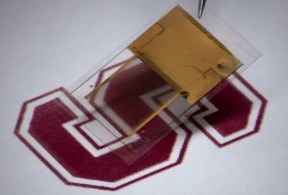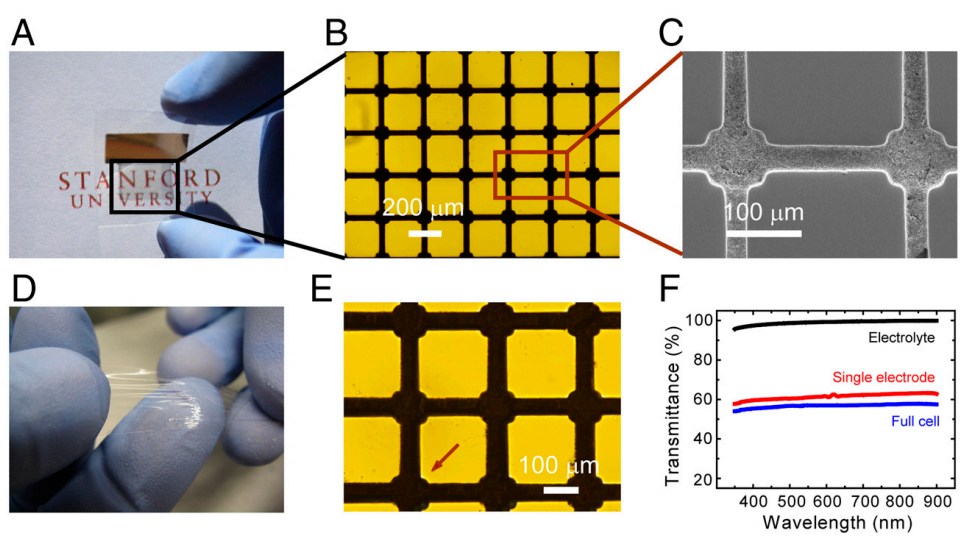Researchers at Stanford University have put together an interesting new battery technology that combines two theoretically coveted attributes: transparency and flexibility. The method of making the battery transparent is rather clever, and while the resulting product is far less energy-dense than its opaque relatives, it’s still an interesting development.
The secret is organizing the components in a certain way on a microscopic scale. The electrode material isn’t see-through, but there’s no reason it has to be a solid block instead of something less substantial. Materials Science professor Yi Cui made the electrode layer of this battery a grid of threads which, at only 35nm thick, are invisible to the naked eye. By arranging them in a sparse grid, he produces an array with tolerable energy density but which light can easily pass through.
The grid is embedded in a non-conductive, flexible substrate, and then a gel electrolyte layer interposed between it and another grid, placed precisely above the first. By stacking the electrode grids in this way and using only clear materials for the other components, they’ve been able to achieve around 60% transparency. The wattage is nothing to crow about, but that’s next on the list to improve.
Applications? I’m no engineer, but I’m sure there are plenty of places where a flexible and/or transparent battery could be useful. Wrapping it around other components, embedding it in already-transparent items (screens, windows, etc), and other ideas are quick to come to mind, but who knows what the research will enable? Cui and his team of students are working hard on scaling the technology and working out the bugs.

